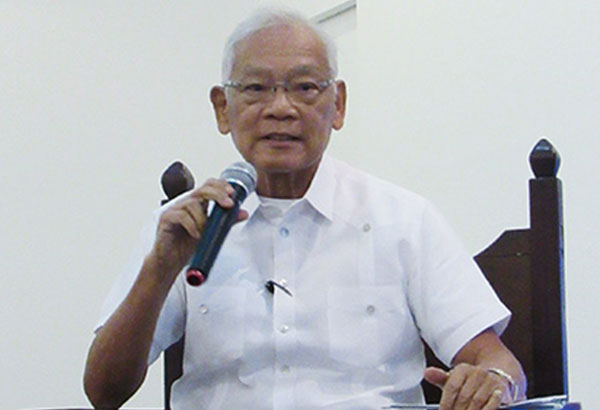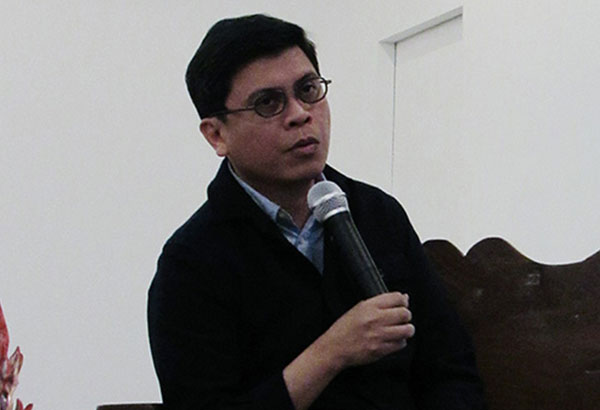Jaime Laya and Patrick Flores on nurturing memory and identity by collecting art

Patron of the arts Jaime Laya speaks about building private art collections and liaising with local masters.
MANILA, Philippines – Throughout Jaime Laya’s decades in the art world, there have likely been countless times he told the tales surrounding the works he had encountered.
Such as the story of a painting owned by Luis Ma. Araneta, purportedly featured as a Luna in a book, when the original was, in reality, signed by Fabian dela Rosa. Then there’s the rumor of a lady refusing her portrait done by the great Fernando Amorsolo — for the reason that her painted face did not resemble the features of Audrey Hepburn.
Stories — whether the stuff of yellowing history books or simply those of old wives’ tales — have long been entwined in the business of image-making and art collecting. In a talk held recently at the Finale Art File, part of a series celebrating 100 years of Luis Ma. Araneta, critic Patrick Flores and collector Jaime Laya tackled identity and collection.
“Artists are cultural guerrillas,” Flores said, quoting cultural advocate Jorge Vargas, “and collectors contribute to the task of national assertion.”

Art critic Patrick Flores gives a lecture on the rise of museums and art collecting in the public context.
In passing down and preserving artworks, possibly a collector’s most romanticized rhetoric is how memory and lineage forge cultural identity; how works of art, even in their humblest incarnations, invoke an ability to remember. Laya, jokingly calling himself a “trivial pursuit champion,” began with collecting coins. “I was interested in one-peso coins, santos, paintings, books, furniture. It was because of my interest in history and because I read the encyclopedia from A to Z!”
Eventually becoming governor of Central Bank, Laya slowly built the bank’s collection of local masterpieces. “My rule then was to buy only large paintings because little objects have a tendency to disappear,” he quipped. Decades of collecting have taught him the business’s tricks and trade-offs. Buying old masters, for instance, runs the risks of acquiring forgeries; prices are high for established artists, yet their works fall prey to overly repetitive themes and techniques; while the works of young artists may yet be cheap, but they come with the promise of prices escalating.
Where art is inextricably linked with value, the social role of art figures in how collectors forge a kinship with favored artists. “One time, I got word that Vicente Manansala was negotiating with the Bureau of Internal Revenue,” recalled Laya. “He was worried about his taxes. I told him he could donate some of the paintings and reduce his income tax. He donated two to three large paintings to the UP Business Research Foundation. We gave him a tax certificate, and we became closer friends after that.”
Artworks, bought, resold, and passed down for generations, tell of the kinship created between artists and collectors. A Joya in the home of Laya recalls days in UP Council meetings where the art collector maneuvers his way beside Jose Joya, hinting that he has yet to buy his piece. Laya’s family portrait recalls the many years it took for Carlos Valino to finish. “He talked a lot during sittings. We only had our eldest by the time we started. (Then, another was) born and he had to paint over the handbag that my wife was holding. Then Amy was coming; there was no more space, so he painted in a hurry!”
Times have of course changed since Laya hung his first purchased painting. Contemporary artists became less concerned with exploring themes of national identity, and arguably some forms of conceptual art forego the message for their medium. “Some artists now really can’t figure out what their message is,” lamented Laya. “A couple of years ago, I liked a painting, bought it, and asked (the artist) what he was thinking of. He said ‘nothing.’ It’s a pity, because Philippine culture has so much inspiration. Now, they’re just following what other artists abroad are doing.”
Unsurprisingly, in a nation seemingly susceptible to collective amnesia (if current events were any indication), even museums themselves can quite literally forget. “In the 1960s, I donated paintings to the National Museum, but they forgot where it came from,” recalled Laya, along with other anecdotes of labels disappearing, and paintings donated, stolen, and repurchased.
Returning to Vargas, there may be a certain cultural war waged in the quiet terrain of private collections, and while seemingly outside matters of hegemony or a threatening political dictatorship, artworks evoke and question a fundamental power to remember. As they tell of identity established through art’s socio-cultural dimension, in creating and collecting works of the imagination, objects hark back to certain histories, enduring kinships, or facts forgotten.
With the act of forgetting, a Fabian dela Rosa may indeed by a Luna, and the lady painted may indeed be Audrey Hepburn.


















